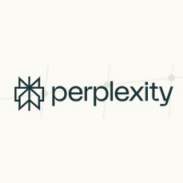Agentic AI Comparison:
Perplexity Labs vs Roo Code
Introduction
This report provides a detailed comparison of two AI-powered agent platforms, Perplexity Labs and Roo Code, based on the metrics of autonomy, ease of use, flexibility, cost, and popularity. These platforms serve distinct user needs: Perplexity Labs focuses on rapid, integrated project creation, while Roo Code is primarily aimed at AI-driven code handling and automation.
Overview
Roo Code
Roo Code is an open-source project hosted on GitHub, positioned as a coding agent that automates code generation, management, and potentially project scaffolding. Roo Code is designed to integrate with developer pipelines for code-related tasks, benefiting developers who require customizable, code-centric automation.
Perplexity Labs
Perplexity Labs is a tool within the Perplexity AI ecosystem, designed for Pro users. It enables the fast creation of web apps, reports, dashboards, and spreadsheets in a seamless, integrated workspace. Labs consolidates multiple tasks and tools, providing a high degree of automation and efficiency for project creation and research workflows.
Metrics Comparison
autonomy
Perplexity Labs: 9
Perplexity Labs provides a high degree of autonomy, handling multi-step project tasks (like research, code execution, chart/image creation) with minimal user intervention, functioning like a 'team' that carries ideas through to execution.
Roo Code: 7
Roo Code offers agent-based code generation and automation but is more oriented towards assisting rather than fully owning the project lifecycle. User direction is often needed for setup and integration.
While both agents automate complex tasks, Perplexity Labs demonstrates broader autonomy throughout diverse workflows, whereas Roo Code’s autonomy is powerful but focused on code automation domains.
ease of use
Perplexity Labs: 9
With an intuitive, all-in-one web interface and curated examples, Perplexity Labs requires minimal onboarding and allows users to complete tasks quickly, even without technical backgrounds.
Roo Code: 6
As a GitHub-hosted tool aimed at developers, Roo Code generally requires programming experience to set up, configure, and utilize effectively, limiting accessibility for non-technical users.
Perplexity Labs’ consumer-grade interface is much easier for general users compared to Roo Code’s developer-oriented setup.
flexibility
Perplexity Labs: 8
Perplexity Labs excels in diverse task handling (reports, spreadsheets, dashboards, app prototyping), integrating multiple AI tools into unified workflows. However, its flexibility is within the bounds of provided templates and AI capabilities.
Roo Code: 8
Roo Code is highly flexible for developers, permitting custom automation flows, integrations, and code generation strategies, particularly in software engineering contexts.
Perplexity Labs is more flexible for general productivity tasks, while Roo Code provides deep flexibility for software-centric automation.
cost
Perplexity Labs: 6
Access to Perplexity Labs requires a Perplexity Pro subscription, priced at $20 per month, which may be a barrier for some users but offers significant value for frequent use.
Roo Code: 10
Roo Code is open-source and free to use, apart from any infrastructure costs the user assumes. This makes it highly cost-effective, especially for individuals or organizations with developer resources.
Roo Code is more cost-effective due to its open-source nature, while Perplexity Labs trades cost for user-friendliness and integration.
popularity
Perplexity Labs: 8
Perplexity Labs benefits from being part of the Perplexity AI suite, which has millions of daily users and rapid growth, ensuring strong visibility and user adoption.
Roo Code: 5
As a niche open-source project, Roo Code is primarily known within developer and open-source communities, with more limited mainstream reach.
Perplexity Labs is significantly more popular in the general and professional user space, while Roo Code’s audience is focused among technical users.
Conclusions
Perplexity Labs delivers a highly autonomous, easy-to-use, and popular solution for rapid project creation across a variety of domains, with a subscription cost reflecting its consumer focus and integration. Roo Code targets developer audiences with maximum flexibility and zero cost for code automation, but requires technical expertise and lacks broad user adoption. The choice between them depends on the end user’s technical requirements, budget, and target workflows.

